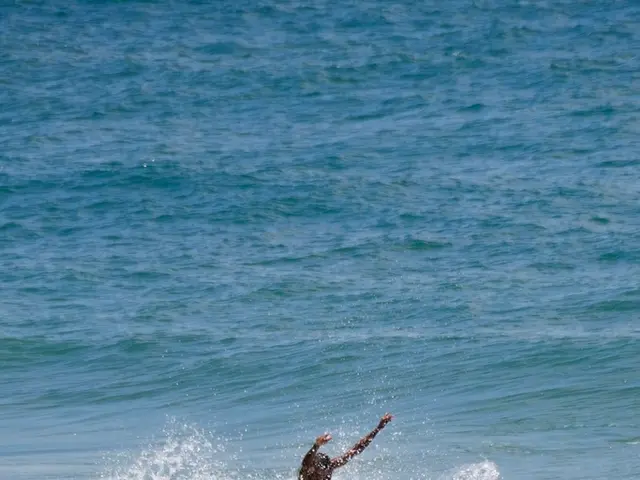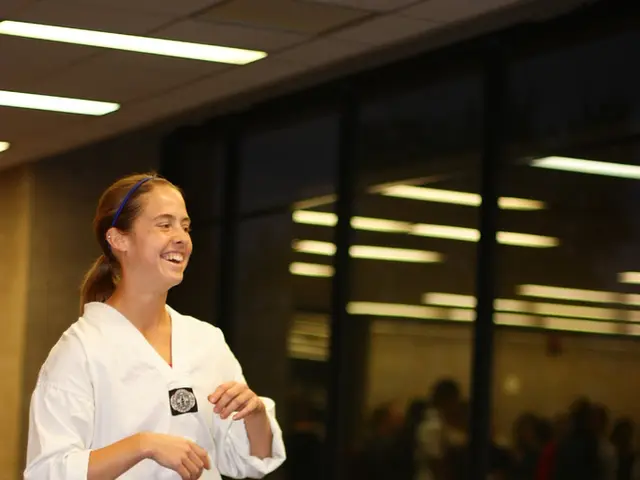Young and Green: New Leadership Takes Charge in Lower Saxony Greens
New Leadership in Lower Saxony's Green Party - New Leadership for Lower Saxony's Greens Party Announced
It's all about fresh faces and bright ideas in the Lower Saxony Greens, as the party's latest leadership duo, Greta Garlichs and Maximilian Strautmann, take the reins in Celle. Garlichs, a 28-year-old from Hannover, was re-elected as chairperson with an impressive 78% of the votes, while Strautmann, a 25-year-old from Osnabrück, secured his position as co-chair with nearly 55% of the votes.
The new leaders face a challenging landscape, as the CDU's Friedrich Merz struggles to maintain his grip on power. In her campaign speech, Garlichs highlighted Merz's shortcomings, stating, "We are the antithesis to a Friedrich Merz, whose word changes like the wind, who has duped his way to the top." Strautmann added, "With myopia ruling the federal government, our party is needed now more than ever."
The Greens have seen a surge in membership, growing from around 12,500 members to over 17,000 in just two years. Determined to make their presence felt in Lower Saxony, Garlichs vows to professionalize the party and ensure it stays relevant in the state’s political landscape.
Support for the new leadership comes from Yola Kreitlow, spokesperson for Green Youth in Lower Saxony. Kreitlow believes that the party's choice to elevate young leaders was a smart move, stating, "Young people are being brought into positions of power, and they bring a wealth of knowledge with them."
The Greens may have fallen short of their expectations in the federal election, dropping to 11.6% nationwide and 11.5% in Lower Saxony. However, they are ready to take on the opposition and present a fresh perspective for Germany, as federal chairwoman Franziska Brantner explained, "We're assuming responsibility for the nation, and we intend to present an honest analysis of our performance at the federal council meeting on April 6 in Berlin."
Criticizing the Union's governing style, Brantner accused the party of macho behavior and boisterous alpha males who lack the courage to tackle pressing issues head-on. Lower Saxony's Minister of Culture, Julia Willie Hamburg, acknowledged recent challenges but pointed to meaningful achievements, such as the state's response to the energy crisis and the 2023 Christmas floods.
While there is room for improvement within the party, as Green Youth sees it, the red-green state government in Lower Saxony remains a privileged position in contrast to potential black-green coalitions. Yet, both Hamburg and the Greens gear up for the second half of the legislative period, armed with plans and ambitious challenges to conquer.
- Political Change in Lower Saxony
- Greens Leadership Change
- Celle
- Franziska Brantner
- Greta Garlichs
- Maximilian Strautmann
- Friedrich Merz
- Julia Willie Hamburg
- Green Youth
- Bundestag
- Hannover
- Osnabrück
- CDU
- Coalition Politics
- Despite the Greens' lower-than-expected performance in the federal election, federal chairwoman Franziska Brantner is optimistic about their role in the European Union, advocating for the Parliament's resolution on the Commission communication on the European Union's role in the fight against racism and xenophobia, particularly in smaller states such as Saxony.
- The newly elected Green leadership in Lower Saxony, Greta Garlichs and Maximilian Strautmann, share Brantner's conviction; they aim to bring their fresh perspectives to their hometown councils in Hannover and Osnabrück, respectively, challenging incumbent leaders like Friedrich Merz of the CDU.
- As the Greens continue to evolve and organize on both a federal and state level, Chairwoman Garlichs, renewing her position in Celle, aspires to lead the party towards professionalism and sustained relevance, embodying the spirit of young leaders rising within the party, as endorsed by Green Youth in Lower Saxony.








